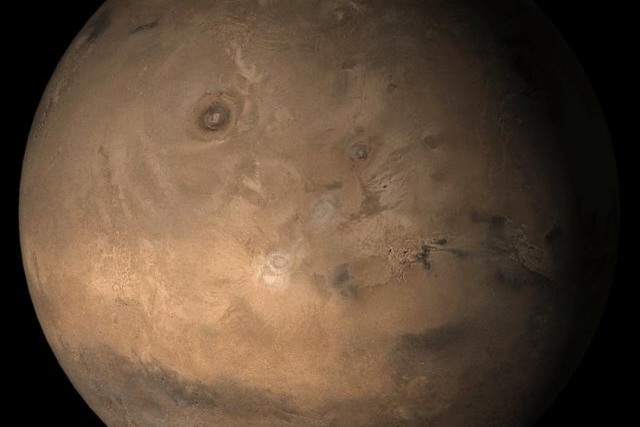NASA’s Curiosity rover discovers methane on Mars changes with the seasons. What does this mean?!
NASA’s Curiosity rover has dug up some pretty fucking rad findings. The methane on Mars changes with the seasons. What does that mean? Good fucking question!
The Verge:
NASA’s Curiosity rover has detected background levels of methane in the atmosphere of Mars, and these concentrations seem to go up in the summer and down in the winter, according to new research. Where the methane is coming from is still a mystery, but scientists have some ideas, including that microbes may be the source of the gas.
Researchers at NASA and other US universities analyzed five years’ worth of methane measurements Curiosity took at Gale Crater, where the rover landed in 2012. Curiosity detected background levels of methane of about 0.4 parts per billion, which is a tiny amount. (In comparison, Earth’s atmosphere has about 1,800 parts per billion of methane.) Those levels of methane, however, were found to range from 0.2 to about 0.7 parts per billion, with concentrations peaking near the end of the summer in the northern hemisphere, according to a study published today in Science. This seasonal cycle repeated through time and could come from an underground reservoir of methane, the study says. Whether that reservoir is a sign that there is or was life on Mars, however, is impossible to say for now.”
Methane had been detected before on the Red Planet, but the measurements were all over the place. In 2003, for instance, telescopes from Earth mapped plumes of methane of about 45 parts per billion on Mars. Other measurements were taken by spacecraft orbiting the planet. And then in 2013 and 2014, Curiosity detected plumes of methane of 7 parts per billion. Today’s study is the first one to show that methane in the Martian air seems to follow a pattern: it has a seasonal cycle, and it’s not just random. That is key for finally understanding where this methane is coming from, and whether it’s a sign that there’s life on our neighboring planet.
“Most humans, as we crawled down from trees, have wondered about, ‘Are we alone? Are we the only life form?’” says Mike Mumma, a planetary scientist at NASA’s Goddard Space Flight Center, who’s studied methane on Mars and was not part of today’s research. “If we can identify whether on Mars this methane has originated from life, that would be one way of answering that question.”




